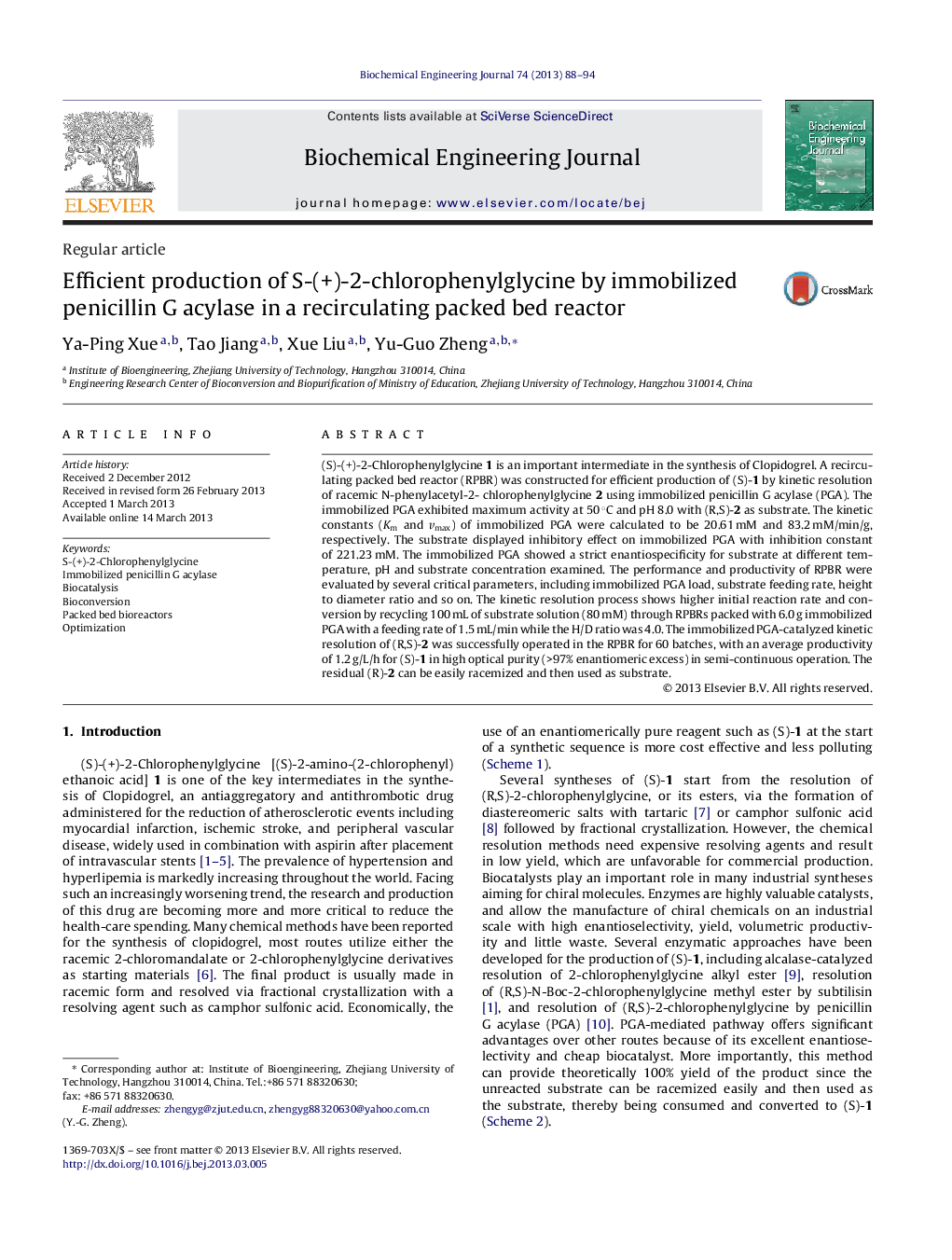| کد مقاله | کد نشریه | سال انتشار | مقاله انگلیسی | نسخه تمام متن |
|---|---|---|---|---|
| 3405 | 168 | 2013 | 7 صفحه PDF | دانلود رایگان |

• RPBR was constructed for efficient production of S-(+)-2-chlorophenylglycine.
• Immobilized PGA exhibited strict enantiospecificity at different reaction conditions.
• Kinetic resolution of substrate was successfully operated for 60 batches in RPBR.
• A productivity of 1.2 g/L/h for S-(+)-2-chlorophenylglycine in >97%ee in PPBR was obtained.
(S)-(+)-2-Chlorophenylglycine 1 is an important intermediate in the synthesis of Clopidogrel. A recirculating packed bed reactor (RPBR) was constructed for efficient production of (S)-1 by kinetic resolution of racemic N-phenylacetyl-2- chlorophenylglycine 2 using immobilized penicillin G acylase (PGA). The immobilized PGA exhibited maximum activity at 50 °C and pH 8.0 with (R,S)-2 as substrate. The kinetic constants (Km and vmax) of immobilized PGA were calculated to be 20.61 mM and 83.2 mM/min/g, respectively. The substrate displayed inhibitory effect on immobilized PGA with inhibition constant of 221.23 mM. The immobilized PGA showed a strict enantiospecificity for substrate at different temperature, pH and substrate concentration examined. The performance and productivity of RPBR were evaluated by several critical parameters, including immobilized PGA load, substrate feeding rate, height to diameter ratio and so on. The kinetic resolution process shows higher initial reaction rate and conversion by recycling 100 mL of substrate solution (80 mM) through RPBRs packed with 6.0 g immobilized PGA with a feeding rate of 1.5 mL/min while the H/D ratio was 4.0. The immobilized PGA-catalyzed kinetic resolution of (R,S)-2 was successfully operated in the RPBR for 60 batches, with an average productivity of 1.2 g/L/h for (S)-1 in high optical purity (>97% enantiomeric excess) in semi-continuous operation. The residual (R)-2 can be easily racemized and then used as substrate.
Figure optionsDownload as PowerPoint slide
Journal: Biochemical Engineering Journal - Volume 74, 15 May 2013, Pages 88–94